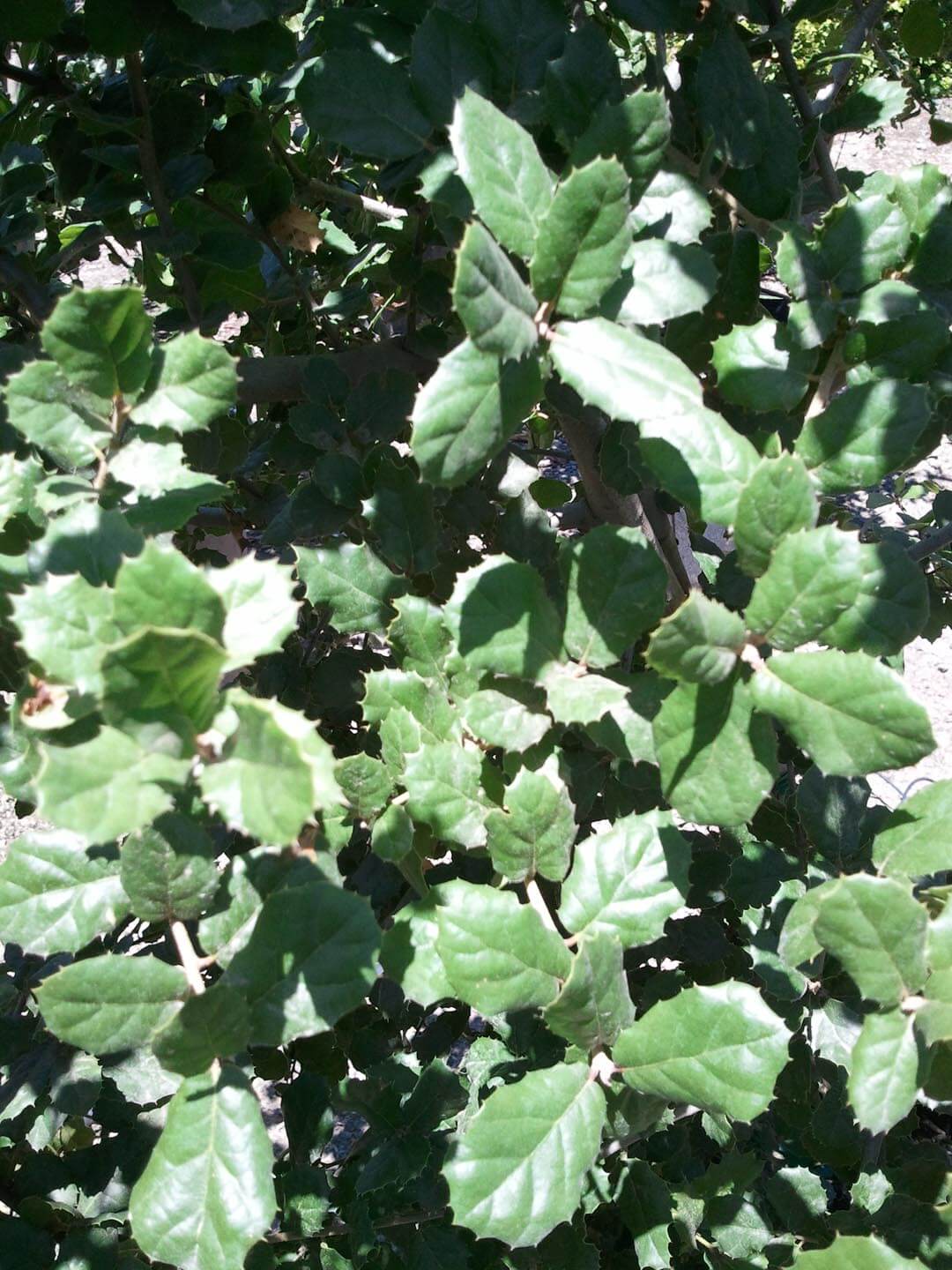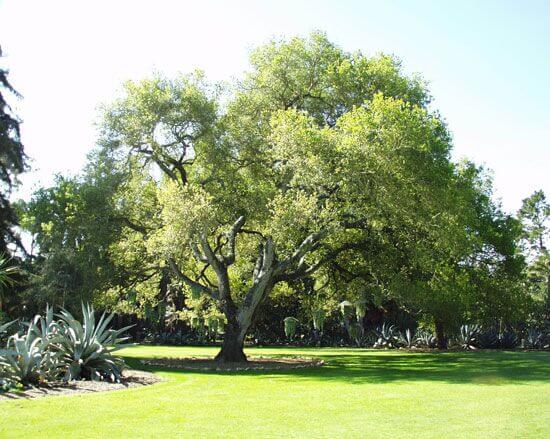


Boething Treeland Farms grows over 1,000 varieties of trees, shrubs, perennials and specialty plants on 10 California nurseries to serve the wholesale landscape and nursery industries throughout the Western United States and beyond.
Plant Type: Trees
Evergreen-Deciduous: Evergreen
Overall Mature Size: Large
Also Grown As: Multi Trunk / Natural Low Branching / Standard Tree
Mature Height & Spread: 20-70' x 25-80'
Natural Growth Habit: Oval
Native To: California
Exposure: Full Sun
Water: Low Water
Flower Color: Insignificant
Special Features: Attractive Bark / Attracts Birds/Butterflies / Deer Resistant / Drought Resistant
Container Sizes: #15, 24" Box, 36" Box, 48" Box, 60" Box
Sunset Garden Zones: 7-9, 14-24
Minimum USDA Hardiness Zone: 9
The mighty oak has become synonymous with grandeur, stability, and substance. These characteristics explain why John Boething chose it as our logo over 60 years ago and why it remains an iconic image in the California landscape today. These are trees that grow slowly but last generations, glorious reminders of natural American beauty. There are specimens of this variety exceeding 250 years in age. Sixteen species are native to California and Quercus agrifolia is among these. Despite its common name, it can be found growing naturally in habitats miles from the coast, even near the Sierra Nevadas. It is the only oak that thrives near the ocean. Expected to eventually (but slowly) reach 70’ in height and 80’ in spread, the Coast Live Oak is a considerable but worthwhile commitment. Excellent for parks, universities, greenbelts, large gardens and even street medians where room allows, its dense foliage casts delicious shade in arid environments. Naturally round-headed and available as a single, multi-trunk or natural low-branching specimen, this evergreen thrives in Sunset Garden zones 7-9 and 14-24. Full sun and adequate but deep water fulfill its requirements. Oval dark green leathery leaves have serrated edges and are 1-3 inches long. The small and cone-shaped acorns were a staple for Native Americans. Attractive bark, deer and drought resistance and its ability to attract birds and butterflies are just some of the reasons this oak is so coveted. Quercus agrifolia is Latin for “field” oak. Its Spanish name, “encino” was used to name more than a few of the original land grants in California.
The mighty oak has become synonymous with grandeur, stability, and substance. These characteristics explain why John Boething chose it as our logo over 60 years ago and why it remains an iconic image in the California landscape today. These are trees that grow slowly but last generations, glorious reminders of natural American beauty. There are specimens of this variety exceeding 250 years in age. Sixteen species are native to California and Quercus agrifolia is among these. Despite its common name, it can be found growing naturally in habitats miles from the coast, even near the Sierra Nevadas. It is the only oak that thrives near the ocean. Expected to eventually (but slowly) reach 70’ in height and 80’ in spread, the Coast Live Oak is a considerable but worthwhile commitment. Excellent for parks, universities, greenbelts, large gardens and even street medians where room allows, its dense foliage casts delicious shade in arid environments. Naturally round-headed and available as a single, multi-trunk or natural low-branching specimen, this evergreen thrives in Sunset Garden zones 7-9 and 14-24. Full sun and adequate but deep water fulfill its requirements. Oval dark green leathery leaves have serrated edges and are 1-3 inches long. The small and cone-shaped acorns were a staple for Native Americans. Attractive bark, deer and drought resistance and its ability to attract birds and butterflies are just some of the reasons this oak is so coveted. Quercus agrifolia is Latin for “field” oak. Its Spanish name, “encino” was used to name more than a few of the original land grants in California.